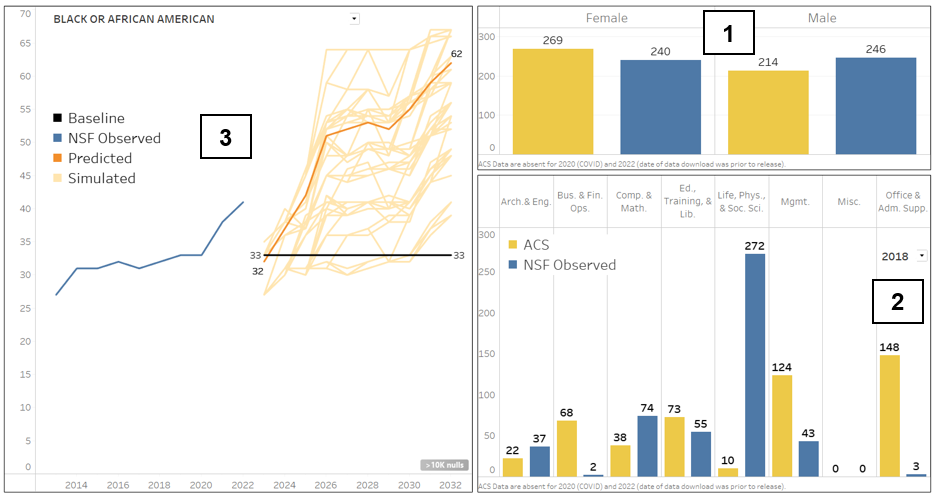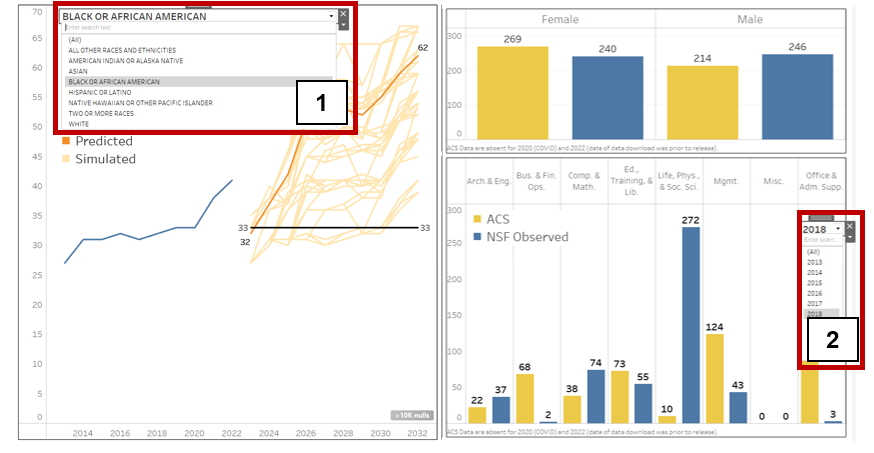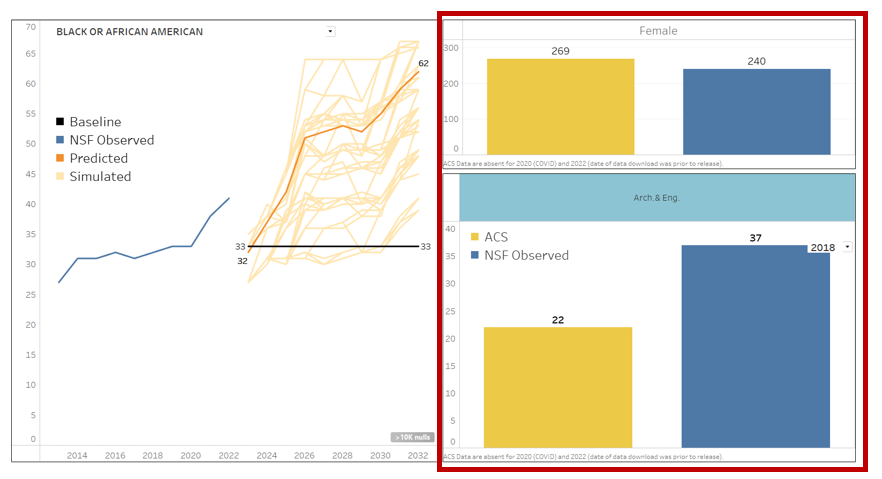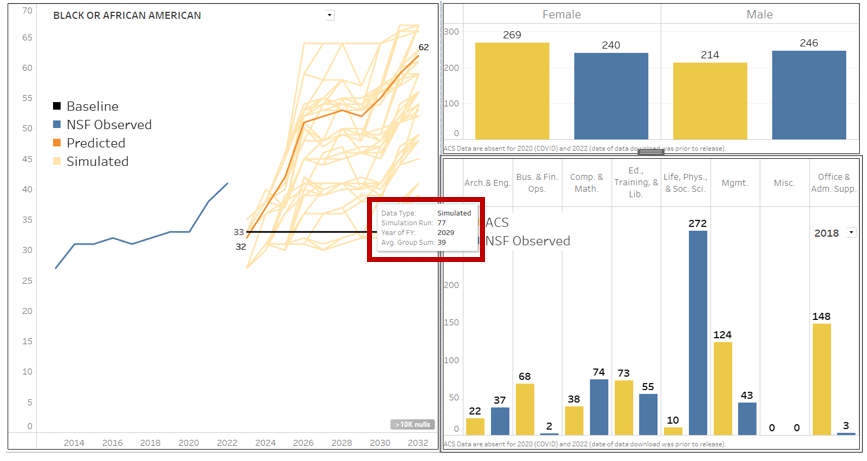15 Dashboard Guide
This dashboard utilizes data from the American Community Survey (ACS) conducted by the U.S. Census Bureau to provide insights into the demographics of the National Science Foundation (NSF) workforce compared to the general civilian workforce in the United States. Additionally, it leverages a built-in predictive model to forecast future trends in the NSF workforce distribution. The dashboard was built using Tableau (version 2023.1) and offers the potential to be hosted on the NSF intranet for high-level visibility across the organization.
Data Sources: American Community Survey (ACS) by the U.S. Census Bureau
Dashboard Layout: The dashboard is divided into three sections:
- Gender Comparison: This section presents a visual comparison of gender distributions between the NSF (“Observed”) and civilian (“Benchmark”) workforces.
- Distribution by Discipline: This section focuses on the distribution of the NSF (“Observed”) and civilian (“Benchmark”) workforces across different standard occupational classes.
- Predictive Model Forecast: This section uses a back-end model to predict how the NSF workforce might be distributed in the future based on current trends. This model is parameterized using NSF workforce trends from 2013 to 2022. Details of this model are provided in the Model Details section.

Interacting with the Dashboard
- Filters: You can filter the data by race and ethnicity (1) and by year (2; based on available ACS data) using the dropdown menu provided. ACS data were not available for 2020 (COVID) or 2022 (time of data download was prior to release of 2022 data).

- Drill-Down: Certain visualizations allow you to drill down for more focused view. Double-click on specific elements within a chart to isolate elements.

- Tooltips: Hover over data points within charts to view additional information, for example, to identify coordinates and values for unlabeled data points.

Interpreting the Forecasts:
The predictive model forecasts are based on historical data and trends. These forecasts should be considered directional and may not perfectly predict the future.

